Contact Us
Table of Contents
Search Site
Google listing of all pages on this website
Site Map
Toby
Johnson's Facebook page
Toby
Johnson's YouTube channel
Toby Johnson on Wikipedia
Toby
Johnson Amazon Author Page

Secure site at
https://tobyjohnson.com
Also on this
website:
As an Amazon Associate
I earn from qualifying purchases.
Toby
Johnson's books:
Toby's books are available as ebooks from
smashwords.com, the Apple iBookstore, etc.

FINDING
YOUR OWN TRUE MYTH: What I Learned
from Joseph Campbell: The
Myth
of the
Great Secret
III

GAY
SPIRITUALITY:
The Role of Gay Identity in the Transformation of Human Consciousness

GAY PERSPECTIVE:
Things Our Homosexuality Tells Us about the Nature of God and the
Universe

SECRET MATTER, a sci-fi novel with
wonderful "aliens" with an
Afterword by Mark Jordan

GETTING
LIFE IN PERSPECTIVE:
A
Fantastical Gay Romance set in two different time periods

THE FOURTH QUILL, a
novel about attitudinal healing and the problem of evil
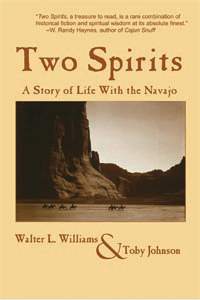
TWO SPIRITS: A Story of Life with
the
Navajo, a collaboration with Walter L. Williams

CHARMED
LIVES: Spinning Straw into
Gold: GaySpirit in Storytelling, a collaboration with
Steve Berman and some 30 other writers

THE MYTH OF THE GREAT
SECRET:
An
Appreciation of Joseph Campbell

IN SEARCH OF GOD IN THE
SEXUAL UNDERWORLD: A Mystical Journey
Unpublished manuscripts
About ordering
Books on
Gay Spirituality:
White
Crane Gay Spirituality Series


Articles
and Excerpts:
Review of Samuel
Avery's The
Dimensional Structure of Consciousness
Funny
Coincidence: "Aliens Settle in San Francisco"
About Liberty Books, the
Lesbian/Gay Bookstore for Austin, 1986-1996
The Simple Answer to the Gay Marriage Debate
A
Bifurcation of Gay Spirituality
Why gay people should NOT Marry
The Scriptural Basis for
Same Sex Marriage
Toby and Kip Get Married
Wedding Cake Liberation
Gay Marriage in Texas
What's ironic
Shame on the American People
The "highest form of love"

Gay Consciousness
Why homosexuality is a sin
The cause of homosexuality
The
origins of homophobia
Q&A
about Jungian ideas in gay consciousness
What
is homosexuality?
What
is Gay Spirituality?
My three
messages
What
Jesus said about Gay
Rights
Queering
religion
Common
Experiences Unique to Gay
Men
Is there a "uniquely gay
perspective"?
The
purpose of homosexuality
Interview on the Nature of
Homosexuality
What the Bible Says about
Homosexuality
Mesosexual
Ideal for Straight Men
Varieties
of Gay Spirituality
Waves
of Gay Liberation Activity
The Gay Succession
Wouldn’t You Like to Be Uranian?
The Reincarnation of
Edward Carpenter
Why Gay Spirituality: Spirituality
as Artistic Medium
Easton Mountain Retreat Center
Andrew Harvey &
Spiritual Activism
The Mysticism of
Andrew Harvey
The
upsidedown book on MSNBC

Enlightenment
"It's
Always About You"
The myth of the Bodhisattva
Avalokitesvara
Joseph
Campbell's description of
Avalokiteshvara
You're
Not A Wave
Joseph Campbell Talks
about Aging
What is Enlightenment?
What is reincarnation?
How many lifetimes in an
ego?
Emptiness & Religious Ideas
Experiencing experiencing experiencing
Going into the Light
Meditations for a Funeral
Meditation Practice
The way to get to heaven
Buddha's father was right
What Anatman means
Advice to Travelers to India
& Nepal
The Danda Nata
& goddess Kalika
Nate Berkus is a bodhisattva
John Boswell was Immanuel Kant
Cutting
edge realization
The Myth of the
Wanderer
Change: Source of
Suffering & of Bliss
World Navel
What the Vows Really
Mean
Manifesting
from the Subtle Realms
The Three-layer
Cake
& the Multiverse
The
est Training and Personal Intention
Effective
Dreaming in Ursula LeGuin's The Lathe of Heaven

Gay
Spirituality
Curious
Bodies
What
Toby Johnson Believes
The
Joseph Campbell Connection
The
Mann Ranch (& Rich Gabrielson)
Campbell
& The Pre/Trans Fallacy
The
Two Loves
The
Nature of Religion
What's true about
Religion
Being
Gay is a Blessing
Drawing Long Straws
Freedom
of Religion

The
Gay Agenda
Gay
Saintliness
Gay
Spiritual Functions
The subtle workings of the spirit
in gay men's lives.
The Sinfulness of
Homosexuality
Proposal
for a study of gay nondualism
Priestly Sexuality
Having a Church to
Leave
Harold Cole on Beauty

Marian Doctrines:
Immaculate Conception & Assumption
Not lashed to the
prayer-post
Monastic or Chaste
Homosexuality
Is It Time to Grow
Up? Confronting
the Aging Process
Notes on Licking
(July, 1984)
Redeem Orlando
Gay Consciousness changing
the
world by Shokti LoveStar
Alexander Renault
interviews Toby
Johnson

Mystical Vision
"The
Evolution of Gay Identity"
"St. John of the
Cross & the Dark Night of
the Soul."
Avalokiteshvara
at the Baths
Eckhart's Eye
Let Me
Tell You a Secret
Religious
Articulations of the
Secret
The
Collective Unconscious
Driving as
Spiritual Practice
Meditation
Historicity
as Myth
Pilgrimage
No
Stealing
Next
Step in Evolution
The
New Myth
The Moulting of the Holy Ghost
Gaia
is a Bodhisattva

The Hero's
Journey
The
Hero's Journey as archetype -- GSV 2016
The Gay Hero Journey
(shortened)
You're
On Your Own
Superheroes

Seeing
Differently
Teenage
Prostitution and the Nature of Evil
Allah
Hu: "God is present here"
Adam
and Steve
The Life is
in the Blood
Gay retirement and the "freelance
monastery"
Seeing with
Different Eyes
Facing
the Edge: AIDS as an occasion for spiritual wisdom
What
are you looking for in a gay science fiction novel?

The Vision
The
mystical experience at the Servites' Castle in Riverside
A Most Remarkable
Synchronicity in
Riverside
The
Great Dance according to C.S.Lewis

The Techniques Of The
World Saviors
Part 1: Brer Rabbit and the
Tar-Baby
Part 2: The
Bodhisattva Avalokiteshvara
Part 3: Jesus
and the Resurrection
Part 4: A
Course in Miracles

The
Secret of the Clear Light
Understanding
the Clear Light
Mobius
Strip
Finding
Your
Tiger Face
How Gay Souls Get Reincarnated

Joseph
Campbell, the Hero's Journey, and the modern Gay Hero-- a five part
presentation on YouTube

About Alien Abduction
In
honor of Sir Arthur C Clarke
Karellen was a homosexual
The
D.A.F.O.D.I.L. Alliance
Intersections
with the movie When We Rise
More
about Gay Mental Health
Psych
Tech Training
Toby
at the California Institute
The
Rainbow Flag
Ideas for gay
mythic stories

People
Kip and Toby,
Activists
Toby's
friend and nicknamesake Toby Marotta.
Harry
Hay, Founder of the gay movement
About Hay and The New Myth
About
Karl
Heinrich Ulrichs, the first
man to really "come out"
About Michael Talbot, gay mystic
About Fr. Bernard Lynch
About Richard Baltzell
About Guy Mannheimer
About David Weyrauch
About
Dennis Paddie
About Ask the Fire
About
Arthur Evans
About
Christopher Larkin
About Mark Thompson
About Sterling Houston
About Michael Stevens
The Alamo Business
Council
Our friend Tom Nash
Second March on
Washington
The
Gay
Spirituality Summit in May 2004 and the "Statement
of Spirituality"

Book
Reviews
Be Done on Earth by Howard
E. Cook
Pay Me What I'm Worth by
Souldancer
The Way Out by Christopher
L Nutter
The Gay Disciple by John Henson
Art That Dares by Kittredge Cherry
Coming Out, Coming Home by Kennth
A. Burr
Extinguishing
the Light by B. Alan Bourgeois
Over Coffee: A conversation
For Gay
Partnership & Conservative Faith by D.a. Thompson
Dark Knowledge
by
Kenneth Low
Janet Planet by
Eleanor
Lerman
The
Kairos by Paul E. Hartman
Wrestling
with Jesus by D.K.Maylor
Kali Rising by Rudolph
Ballentine
The
Missing Myth by Gilles Herrada
The
Secret of the Second Coming by Howard E. Cook
The Scar Letters: A
Novel
by Richard Alther
The
Future is Queer by Labonte & Schimel
Missing Mary
by Charlene Spretnak
Gay
Spirituality 101 by Joe Perez
Cut Hand: A
Nineteeth Century Love Story on the American Frontier by Mark Wildyr
Radiomen
by Eleanor Lerman
Nights
at
Rizzoli by Felice Picano
The Key
to Unlocking the Closet Door by Chelsea Griffo
The Door
of the Heart by Diana Finfrock Farrar
Occam’s
Razor by David Duncan
Grace
and
Demion by Mel White
Gay Men and The New Way Forward by Raymond L.
Rigoglioso
The
Dimensional Stucture of Consciousness by Samuel Avery
The
Manly Pursuit of Desire and Love by Perry Brass
Love
Together: Longtime Male Couples on Healthy Intimacy and Communication
by Tim Clausen
War
Between Materialism and Spiritual by Jean-Michel Bitar
The
Serpent's Gift: Gnostic Reflections on the Study of Religion by
Jeffrey J. Kripal
Esalen:
America and the Religion of No Religion by Jeffrey J. Kripal
The
Invitation to Love by
Darren Pierre
Brain,
Consciousness, and God: A Lonerganian Integration by Daniel A
Helminiak
A
Walk with Four Spiritual Guides by Andrew Harvey
Can Christians Be Saved? by Stephenson & Rhodes
The
Lost Secrets of the Ancient Mystery Schools by Stephenson &
Rhodes
Keys to
Spiritual
Being: Energy Meditation and Synchronization Exercises by Adrian
Ravarour
In
Walt We
Trust by John Marsh
Solomon's
Tantric Song by Rollan McCleary
A Special Illumination by Rollan McCleary
Aelred's
Sin
by Lawrence Scott
Fruit
Basket
by Payam Ghassemlou
Internal
Landscapes by John Ollom
Princes
& Pumpkins by David Hatfield Sparks
Yes by Brad
Boney
Blood of the Goddess by William Schindler
Roads of Excess,
Palaces of
Wisdom by Jeffrey Kripal
Evolving
Dharma by Jay Michaelson
Jesus
in Salome's Lot by Brett W. Gillette
The Man Who Loved Birds by Fenton Johnson
The
Vatican Murders by Lucien Gregoire
"Sex Camp"
by
Brian McNaught
Out
& About with Brewer & Berg
Episode One: Searching for a New Mythology
The
Soul Beneath the Skin by David Nimmons
Out
on
Holy Ground by Donald Boisvert
The
Revotutionary Psychology of Gay-Centeredness by Mitch Walker
Out There
by Perry Brass
The Crucifixion of Hyacinth by Geoff Puterbaugh
The
Silence of Sodom by Mark D Jordan
It's
Never About What It's About by Krandall Kraus and Paul Borja
ReCreations,
edited by Catherine Lake
Gospel: A
Novel
by WIlton Barnhard
Keeping
Faith: A Skeptic’s Journey by Fenton Johnson
Dating the Greek Gods by Brad Gooch
Telling
Truths in Church by Mark D. Jordan
The
Substance of God by Perry Brass
The
Tomcat Chronicles by Jack Nichols
10
Smart
Things Gay Men Can Do to Improve Their Lives by Joe Kort
Jesus and the Shamanic Tradition of Same Sex Love
by Will Roscoe
The
Third Appearance by Walter Starcke
The Last Hours of Ancient Sunlight by Thom Hartmann
Surviving
and Thriving After a Life-Threatening Diagnosis by Bev Hall
Men,
Homosexuality, and the Gods by Ronald Long
An Interview
with Ron Long
Queering Creole Spiritual Traditons by Randy
Conner & David Sparks
An Interview with
Randy Conner
Pain,
Sex
and Time by Gerald Heard
Sex
and the Sacred by Daniel Helminiak
Blessing Same-Sex Unions by Mark Jordan
Rising Up
by
Joe Perez
Soulfully
Gay
by Joe Perez
That
Undeniable Longing by Mark Tedesco
Vintage: A
Ghost
Story by
Steve Berman
Wisdom
for the Soul by Larry Chang
MM4M a DVD
by Bruce Grether
Double
Cross
by David Ranan
The
Transcended Christian by Daniel Helminiak
Jesus
in Love by Kittredge Cherry
In
the Eye of the Storm by Gene Robinson
The
Starry Dynamo by Sven Davisson
Life
in
Paradox by Fr Paul Murray
Spirituality for Our Global Community by Daniel
Helminiak
Gay & Healthy in a Sick Society by Robert A.
Minor
Coming Out: Irish Gay Experiences by Glen O'Brien
Queering
Christ
by Robert Goss
Skipping
Towards Gomorrah by Dan Savage
The
Flesh of the Word by Richard A Rosato
Catland by
David Garrett Izzo
Tantra
for Gay Men by Bruce Anderson
Yoga
&
the Path of the Urban Mystic by Darren Main
Simple
Grace
by Malcolm Boyd
Seventy
Times Seven by Salvatore Sapienza
What
Does "Queer" Mean Anyway? by Chris Bartlett
Critique of Patriarchal Reasoning by Arthur Evans
Gift
of
the Soul by Dale Colclasure & David Jensen
Legend of the Raibow Warriors by Steven McFadden
The
Liar's
Prayer by Gregory Flood
Lovely
are the Messengers by Daniel Plasman
The Human Core of Spirituality by Daniel Helminiak
3001:
The Final Odyssey by Arthur C. Clarke
Religion and the Human Sciences by Daniel Helminiak
Only
the
Good Parts by Daniel Curzon
Four
Short
Reviews of Books with a Message
Life
Interrupted by Michael Parise
Confessions of a Murdered Pope by Lucien Gregoire
The
Stargazer's Embassy by Eleanor Lerman
Conscious
Living, Conscious Aging by Ron Pevny
Footprints Through the Desert by Joshua Kauffman
True
Religion by J.L. Weinberg
The Mediterranean Universe by John Newmeyer
Everything
is God by Jay Michaelson
Reflection
by Dennis Merritt
Everywhere
Home by Fenton Johnson
Hard Lesson by James
Gaston
God
vs Gay?
by Jay Michaelson
The
Gate
of Tears: Sadness and the Spiritual Path by Jay Michaelson
Roxie
&
Fred by Richard Alther
Not
the Son He Expected by Tim Clausen
The
9 Realities of Stardust by Bruce P. Grether
The
Afterlife Revolution by Anne & Whitley Strieber
AIDS
Shaman:
Queer Spirit Awakening by Shokti Lovestar
Facing the Truth of Your Life by Merle Yost
The
Super Natural by Whitley Strieber & Jeffrey J Kripal
Secret
Body by
Jeffrey J Kripal
In
Hitler's
House by Jonathan Lane
Walking on Glory by Edward Swift
The
Paradox
of Porn by Don Shewey
Is Heaven for Real? by Lucien Gregoire
Scissors,
Paper, Rock by Fenton Johnson
Toby
Johnson's
Books on Gay Men's Spiritualities:

Gay Perspective
Things Our [Homo]sexuality
Tells Us
about the
Nature of God and
the Universe
Gay
Perspective is available as an audiobook narrated
by Matthew Whitfield. Click
here

Gay Spirituality
Gay Identity and
the Transformation of
Human Consciousness
Gay
Spirituality is now
available as an audiobook, beautifully narrated by John Sipple. Click here

Charmed
Lives: Gay Spirit in Storytelling
edited by
Toby Johnson
& Steve Berman

Secret
Matter
Lammy Award Winner for Gay
Science Fiction
updated

Getting Life in
Perspective
A Fantastical Romance
Getting
Life in Perspective is available as an
audiobook narrated by Alex Beckham. Click
here

The Fourth Quill
originally published
as
PLAGUE
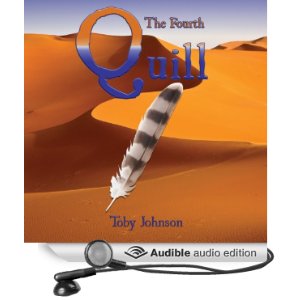
The Fourth Quill is
available
as an audiobook, narrated by Jimmie
Moreland. Click here

Two Spirits: A Story of
Life
with the Navajo
with Walter L. Williams
 Two
Spirits is available as an
audiobook narrated by Arthur Raymond. Click
here Two
Spirits is available as an
audiobook narrated by Arthur Raymond. Click
here

Finding
Your Own True Myth: What I Learned from Joseph
Campbell
The
Myth
of the
Great Secret III

In Search of God in the Sexual Underworld

The Myth of the Great
Secret: An Appreciation of Joseph Campbell.
This
was the second edition of this book.

Toby Johnson's
titles are
available in other ebook formats from Smashwords.
|
Toby and Toby
from Toby Johnson's book GAY
PERSPECTIVE:
While I was working
as a psychiatric
counselor in a gay mental health clinic in the Tenderloin District of
San Francisco, I met Harvard-trained political science and sociology
scholar (and nicknamesake) Toby Marotta.
After Joseph Campbell, Marotta--with his irrepressible enthusiasm
for gay
consciousness as the flower of modern countercultural thought and his
own successful demonstration of revolution through consciousness
change--has had the greatest influence on my intellectual life. (At
one time, I mythologized Toby as my "Guardian Angel." See below.)
Together
we
launched ourselves into literary careers, beginning with the revision
of Toby's massive Harvard doctoral dissertation on the rise of the
modern gay and lesbian rights movement which was published as The
Politics of Homosexuality: How Lesbians and Gay Men Have Made
Themselves a Political and Social Force in Modern America.
We
compiled a series of interviews with gay Harvard classmates of his
that appeared in the book Sons of Harvard: Gay Men from the Class of
67.
A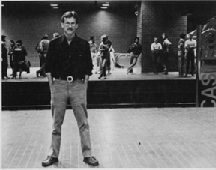 nd we worked together in a federally-funded study of gay
hustlers and teen runaways, which I summarized in In Search of God
in the Sexual Underworld. nd we worked together in a federally-funded study of gay
hustlers and teen runaways, which I summarized in In Search of God
in the Sexual Underworld.
I'd been a gay counselor and activist,
but from Toby I learned the rich and complicated history of the
movement. With him I began to understand my interest in religion and
spirituality in the context of gay liberation.
The photo above is of Toby standing in the Castro Street Muni
Station.
Toby dated the architect who designed the station, Howard
Grant.
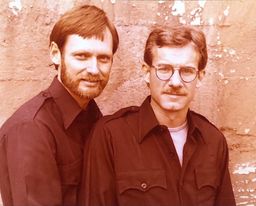
Here's Howard and Toby. They were lovers and dear
friends for 10 years. Howard and his former wife proofread the final
version of Sons of Harvard.
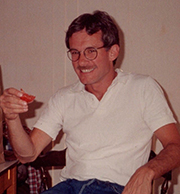
Here's Toby when Toby & Toby were working together on his books. He was about 33 at that time.
Read about Toby
Marotta's
vision of positive, life-affirming gay culture
Read about The
D.A.F.O.D.I.L. Alliance of Gay Mental Health workers in San
Francisco in 1979:
a great example of successful community activism.
Read about the URSA study Toby
and
Toby worked together in of
teenage boys involved in gay
prostitution
Toby
Marotta and I have both been called Toby since
birth (for me, actually even before; it was my parents' nickname for
me as a fetus). For both of us it's a nickname not based on our given
names. We were born in 1945 almost exactly six months apart (185 days to be exact). Marotta in
Massachusetts; me in Texas.
He
was working
in a
city-sponsored study of social service agencies in downtown San
Francisco; I was working in a mental health agency. AND I happened to
be on intake at the front desk when he came in. We quickly discovered
the parallels and coincidences in our lives. We got to be close
friends and then started working together when I offered to help him
proofread and prepare his dissertation for final submission. We made a
sort of pact to help each other get our respective dissertations
published.
We worked in a
study
together of teenage boys involved in gay
prostitution in New York, San
Francisco, and Boston primarily. We roamed around big cities at night
talking to the boys about their lives. As a mental health clinician,
I was focused on social service agencies and visited federally-funded
runaway shelters to observe how they handled boys involved in gay
hustling.
Between us, I
came to be
known
as Toby Won and he was Toby Too. We were given these names by a
client of mine named Harry Nivens who I counseled at the clinic during a
suicidal period in Harry's life. So since he lived, he declared "Toby
won." Later Harry met Toby Marotta--and worked with us in the hustler
study for a while. So Marotta was Toby Too.
Toby Marotta
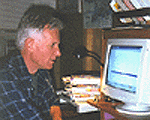
Library Thing about Toby too.
Toby Marotta is author of a small book called AIDS-Preventing
Sexual Hygiene on sexual hygiene based,
interestingly, in the cleanliness practices of Zorastrianism. The
book is subtitled: "Complement Condom Use by Gargling, Douching, and
Washing After Sex."
It's a terrible mistake, Marotta argues, to think
there's
nothing you can do if you make a mistake in judgment and get yourself
into an act of unsafe sex. There are ways to wash afterwards (with a
vinegar solution, for instance) that can be shown effective in
reducing spread of microorganisms.
Toby also assembled a large collection of gay
memorabilia--from political buttons to posters to books and various
sorts of collectables.

Read about Toby & Toby working together on Sons of Harvard — and the wonderful consequences that came from Toby Marotta's coming out in his 10th-year reunion class notes.
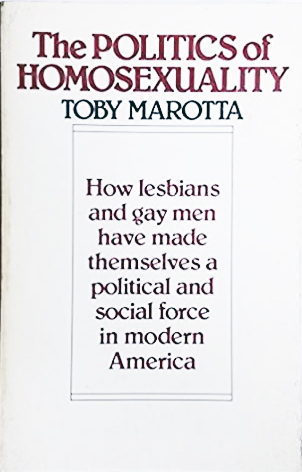
Toby Marotta's books are available used.
Click on the
links
to read about how the books were written and to see how to order:
The
Politics of Homosexuality

From Finding God in the Sexual Underworld
Toby
[Marotta] was a kind of mirror for me, a
manifestation by the universe of myself in the form of another—another
with almost my own past and with my own name. In him I could see how my
beliefs and values affected a life. I liked the example I saw. Toby
became a confirmation of my efforts to live as I believed all should.
As the weeks passed and we came to know one another better, often over
mugs of beer after the drop-in group, I began to imagine Toby Marotta
as a messenger from God, come to reassure me and lead me on my journey.
Indeed, having been raised as a devout little Catholic boy believing in
all the mythology of my religion, I whimsically and lovingly
mythologized Toby as an incarnation of my "Guardian Angel."
In the Servite Order, which I’d joined toward the
end of college, I’d taken Peregrine as a ritual name. It means
“wanderer.” It had been the name of a Servite saint. A curious part of
his legend, a part I did not learn until sometime after I’d begun to
imagine Toby as my Guardian Angel, is that the 13th century Italian
Saint Peregrine was said to have been given an angel for a companion.
Though I left the Servites after three years, I kept my identity as
Peregrine the wanderer, including, apparently, the angel guide.
———
We'd gone out one afternoon to a gay bar in the
Haight with a name like The Garden. The decor was white lattice work
with garlands of artificial flowers that looked like the remnants of a once-fancy wedding. We were having fun
and laughing. We got up to dance.
(photos by Howard Grant)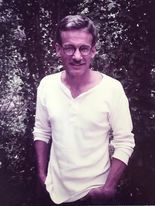
As we danced around in that 70s free style, I was
thinking about how wonderful it was that I'd met this neat guy from
Harvard with all these ambitions of publishing, and who was inviting me
to at least help him… and sort of to climb on his coattails. Toby
seemed to be glowing in the vision. It was as though circles of light
were spinning around him. I was struck by the realization that, at
least at that moment, Toby Marotta was appearing as my Guardian Angel.
Or maybe better my Guardian Angel was appearing as Toby Marotta and
inviting me to follow him on our mutual hero quests.
We later wondered if they'd pumped something into
the air--poppers or nitrous oxide. We both got quite euphoric. It was a wonderful
and memorable moment.
I dedicated Finding God in the Sexual Underworld to Toby Too, "my sometimes guardian angel."
It was through his Harvard connections that we
got connected with John Brockman, THE hotshot agent in New York at the
time. Toby's college roommate's sister was married to Jim Landis, the
Editor-in-Chief at William Morrow. Over a Thanksgiving dinner Toby had
mentioned he was about to complete his PhD and was looking for a
publisher. Jim Landis spoke up and said, "Bring it to me."
And we did. Landis told us we needed a good agent
and introduced us to Brockman. It's much more complicated, but we ended
up each getting a contract for two books. Toby really was the guide on
my hero journey into the world of publishing.
Toby Marotta and I didn't pursue the
collaboration beyond those two books of his and the two books of mine.
(And mine were of a different genre entirely--Joseph Campbell and myth
were very different from Toby's social science and fact-finding.)
It was through John Brockman that I became friends with Michael Talbot, author of The Holographic Universe. Talbot was John Brockman's personal assistant and ghostwriter for the scientists the Brockman Agency represented.
I moved back to my hometown San Antonio where I
seemed to be an expert on the gay political movement--because of what I
had learned from Toby Marotta. I was head of the Gay Alliance for a
while and was in private practice as "THE gay therapist" in town, then
moved to Austin with my partner Kip and took over runnng the gay and
lesbian community bookstore.
I kept writing and publishing with small gay
presses. For a while I assisted Toby with his notes about his
continuing research in the Tenderloin with URSA in parallel projects to
the hustler study. He continued to reside in the hustler neighborhoods
in his participant observer role. He did useful research on drug-use
and, from interviewing hustlers and sexually active youth about their
actual sexual behaviors, Toby was able to specify anal sex from top to
bottom as the vector of transmission of HIV among gay men. This was
long before public health officials acknowledged that it wasn’t just
homosexuality itself that caused AIDS or that condoms could be an
effective prophylactic. Toby tried unsuccessfully to alert the CDC and
AIDS experts about his findings.
Toby's partner Rusty had been a geology
professor at Harvard. He had a small private business on the side importing crystals and semi-precious stones to
America. When Toby and Rusty lived in Oakland, the basement of the house was filled with shelves of "Crystals of India's" inventory. They had come to know Tucson, Arizona, because it
is the site of the annual Crystals
& Minerals Show, when "more than 65,000 guests from around the
globe descend upon Tucson, to buy, sell, trade, and bear witness to
rare and enchanting gems, minerals, and fossils at more than 40 gem
show locations across the city." They moved to that city in the
desert in the 1990s. And then later, in the 2010s, moved to Ocean Beach, San Diego.
Toby and I had gone different directions by that
time, though we kept in touch with birthday cards. I learned so much
from him. He was more than just a friend and literary collaborator. He
truly was a guide who showed me how to take the next big step into the
unknown.

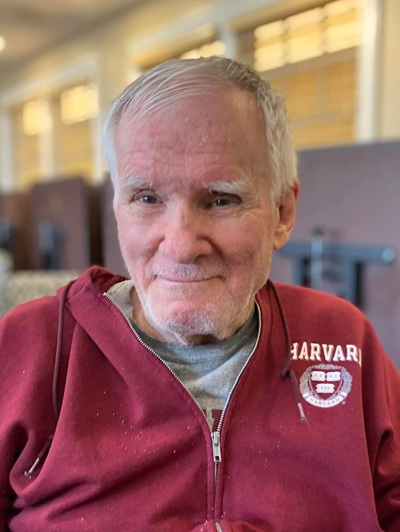
Toby Marotta is back in Boston and retired from
public life. Following an auto accident a few years ago in which he
sustained serious injuries, he moved back to Massachusetts to be near home and his family and to take up residence in a retirement home very
loosely associated with Harvard and his academic roots. (The photo
shows him at age 78 in 2023.)
He still has that marvelous twinkle in his smile
that endeared him to me so many years ago. I am grateful to his
sister-in-law, Terry Marotta, herself an accomplished author and storyteller and Public
Radio star, for keeping me apprised of the twists and turns of Toby
Too's life journey.
Terry shared a lovely story with me. She wrote about her daughter Carrie.
 "Carrie had been with me when I visited Toby in San Francisco in 1978. She was a little over a year old then. One
afternoon she had had a nap in his place in the Tenderloin, as I
happily looked out the window and took some moments to myself. "Carrie had been with me when I visited Toby in San Francisco in 1978. She was a little over a year old then. One
afternoon she had had a nap in his place in the Tenderloin, as I
happily looked out the window and took some moments to myself.
"Fifteen years later in 1993, when Carrie was
looking at Stanford, we visited him again and he pulled out a diaper pin and said to her, “Look! you left this with
me by mistake!” It was so touching to see that he had saved it all that
time.
"On that same visit he gestured to his
many important papers and said to her “This is all for you; this is my
legacy.” The LGBTQI library at Harvard will be receiving all
of his papers. Just in the last few months, Carrie and David [Terry's husband, Toby's brother] arranged 62
boxes’ worth of them to be shipped to Cambridge. The library is
absolutely thrilled to have them."
Toby's legacy lives on.
About the nature of mythology and religion, Joseph Campbell says:
Briefly formulated, the universal doctrine
teaches that all the visible structures of the world--all things and
beings--are the effects of a ubiquitous power out of which they rise,
which supports and fills them during the period of their manifestation,
and back into which they must ultimately dissolve.

The Guardian Angel mythology from my Catholic
childhood is about being guided and guarded by that "ubiquitous power"
which is the unmanifest Absolute, consciousness before manifestation,
which fills us and guides us. In the Tarot deck this power appear as The Fool. The card shows the trusting innocent about to take his first step.
This deepest consciousness is who we really are,
and it manifests itself to us as our lives. Toby Marotta was my
guide—in the very best sense, my Fool—who showed me how to take that
next step, and who then, for me, dissolved back into the Absolute.
BACK to
Toby Johnson's home page

To preserve the bio that Toby Marotta posted to Library Thing in April 2011, I am pasting it here:
After romping through the Medford Public
School System I attended Harvard College and enrolled in its newly
renamed Kennedy School of Government. "Alternate service" allowed me to
teach in ghetto high schools in Philadelphia and Boston instead of
going to Vietnam.
Upon returning to Harvard I worked as a teaching fellow with its
leading neo-conservative professors before writing my Ph.D.
dissertation, published by Houghton Mifflin in 1981 as "The Politics of
Homosexuality."
Its follow-up, "Sons of Harvard: Gay Men from the Class of 1967,"
personified my embrace of the radical injunction to make matters
personal political. So did the formalization of my partnership with
Rustam Kothavala, whom I had met when I was an undergraduate resident
of Lowell House and he was the iconoclastic Professor of Geology who
became its Senior Tutor.
In 1975, Rusty and I moved to the San Francisco Bay Area and bought a
house in the Berkeley flats. While he started Crystals of India, a
business that occasionally permitted me to join his mineral-collecting
expeditions on the Indian subcontinent, I pursued our interest in GLBT
community-building by doing ethnographic research among "runaway and
homeless youth" in the Tenderloin and Polk Gulch areas of San Francisco.
My next official sponsors were a nonprofit consulting group named URSA
and then a respected twin called the Institute for Scientific Analysis.
Both specialized in obtaining federal grants to conduct city-related
research and training projects funded by the federal government.
At the start of the 1980s, with the American surfacing of the deadly
epidemic that went from being called GRID, for Gay-Related Immune
Deficiency, to AIDS, for Acquired Immunde Deficiency Syndrome, my
ethnographic research reports led to a visit from epidemiologists
affiliated with the U.S. Centers of Disease Control.
From the get-go I had been privately and then publicly critiquing their
initial approach to Prevention, the term they soon added to their
official name, for failing to emphasize prevention via post-sex hygiene.
In 1987, Dan Waldorf, a veteran substance-abuse researcher based in San
Francisco and Alameda, hired me to run the Castro field office we
rented for the purpose of conducting interviews and presiding over
ethnographic research funded by National Institutes of Health to flesh
out links between methamphetamine use and "unsafe sex."
Slowly but surely I became convinced that the simple alternatives for
AIDS and STI prevention that U.S. Surgeon General C. Everett Koop
advocated and institutionalized -- either abstinence or condom use --
were too remote from the realities of loved-based and underclass
intimacies to be practical all the time for everyone.
The third federally funded research project I worked on required me to
spend a year conducting week-long strings of in-depth interviews with
politicized local adolescents who had been diagnosed with AIDS.
In public they echoed the official mantra of abstinence or condom use.
In private, I soon discovered,they abandoned so-defined "safe sex"
whenever they got involved with a loving partner.
What they needed was an approach to infection-prevention that could be
practiced AFTER they had demonstrated and shared in the
un-self-protecting ways they felt were truly loving.
I soon became convinced that in the absence of an effective vaccine,
viable AIDS-prevention efforts required discovering and publicizing
effective STD and HIV prevention measures that could be taken AFTER
people had demonstrated their trust by "making love," which in this
case they understood and experienced to mean without donning and
insisting upon "protection" before "making love."
Moving to Tucson, Arizona, where Andrew Weil was incorporating holistic
healthcare and integrative medicine into the medical school at the
University of Arizona, supplied me with a supportive context for adding
post-sex hygiene to the existing official options (either abstinence or
condom use) for STI and AIDS prevention.
My Web-facilitated research into traditional nostrums and foreign
customs for sex-related health, which contemporary American medical
experts and their worldly counterparts came to call "alternative" and
"complementary" medicine, revealed that early 20th-Century American and
European efforts to prevent the spread of syphilis and gonorrhea relied
on post-sex washing.
This well-documented and written about history helped me to zero in on
the potential of post-sex washing to help prevent the spread of HIV
infections and AIDS.
Using Internet/Web-based search engines permitted me to buttress my
case in academic fashion by tracking down and writing about the handful
of widely overlooked medical journal articles reporting on scientific
studies that had found and documented that washing involved body parts
after fluid-exchanging sexual intercourse was an effective way to
squelch or at least greatly reduce the risk of getting and spreading
sexually transmitted infections including HIV infections.
For this opportunity to publicly explain and document my multifaceted
case for post-sex hygiene by citing and sometimes commenting on a
handful of authoritative books that do the same thing I am grateful to
LibraryThing.com.
Here is the extensive bio Toby wrote for Amazon.com Author Central.
1/9/2016
Toby Marotta
Overview
Here I am, 34 years after producing "The Politics of
Homosexuality" (Houghton Mifflin, 1981), a popularized version of my
Harvard Ph.D. thesis. Next came "Sons of Harvard: Gay Men from the
Class of 1967" (William Morrow, 1982), my personification of its major
themes.
Professors Nathan Glazer and Martha Derthick, then leading
national scholars in the fields of ethnic studies and urban politics,
oversaw the study of original documents and the face-to-face
interviewing I did to research the first book.
Toby Johnson, whom I had gotten to know in San Francisco during
the 1970s, when he was working as a therapist at its Tenderloin Clinic
while I was co-directing the Tenderloin Ethnographic Research Project
for nearby Central City Hospitality House, supplied the multifaceted
support I needed to produce both of these books in tandem.
I, in turn, helped him produce his own first two books, "The Myth
of the Great Secret" and "In Search of God in the Sexual Underworld,"
both published by William Morrow.
Jonathan Galassi, then a young editor at Houghton Mifflin, helped
me transform my Ph.D. thesis into an authoritative book bearing the
same name. Today, I'm proud to say, he is a senior editor at Farrar,
Straus, and Giroux who has also just produced an enthralling novel
named "Muse" and a book of his own poetry titled "Left-Handed," both
published by Knopf.
Roots of Pride
My "Politics of Homosexuality" begins by chronicling the
self-styled "homophile" drive for civil rights and social status that
began early in the 1950s when a handful of bold bisexual and homosexual
men in Southern California organized the Mattachine Society and several
bold lesbians in San Francisco started the Daughters of Bilitis.
Chapters of these groundbreaking groups were started in other big
American cities and they soon opted to incorporate as independent
non-profit organizations.
Then came the so-called Stonewall Riots, which erupted in
Greenwich Village in lower Manhattan at the very end of June and start
of July in 1969 thanks to a handful of young Baby Boomers with
self-styled counter-cultural worldviews and New Left political
outlooks. These efforts rapidly produced an unprecedented,
multifaceted, American drive for GLBT -- their shorthand for Gay,
Lesbian, Bisexual, and Transgender -- liberation and community.
"Roots of Pride and Power," which I am preparing for publication
to help set the stage for Stonewall 50 June of 2019, is a narrative
history of these developments, both more personal and more colorful
than my "Politics of Homosexuality."
It, too, begins by surveying the two decades of homophile
educational and lobbying efforts initially inspired and shaped by "The
Homosexual in America." This introduction to what was then the taboo
subject of homosexuality was composed by Professor Edward Sagarin of
New York University, who published it using the pseudonym Donald
Webster Cory.
My prospective "Roots of Pride and Power" concentrates on showing
how this then 20-year-old, big city-based, self-styled homophile
movement was supplanted by a proliferation of self-styled liberation
groups in the wake of "Stonewall."
First came the Gay Liberation Front and its initial spin-off,
Radicalesbians, also started by Baby Boomers radicalized by the crude
ways in which local police officers had responded to their picketing of
the Mafia-run Stonewall Inn. Then came a handful of successive
spin-offs, most notably, Gay Youth, STAR, short for Street Transvestite
Action Revolutionaries, GAA, short for Gay Activists Alliance, and the
ad hoc representative committee that organized the first annual
Christopher Street Liberation Day march and Gay-In in Central Park held
in June of 1970.
In the rest of this synopsis, I describe each of these
groundbreaking developments in a bit more detail. Then I use a brief
concluding section to explain the 1981 arrival of GRID, short for
Gay-Related Immune Deficiency, soon to be renamed AIDS, for Acquired
Immune Deficiency Syndrome. Initially an epidemic of sexually
transmitted infections that tended to be fatal, AIDS engendered both
genuine heroism in and widespread personal, professional, and public
support for what had begun as a small, homespun drive for social status
and civil rights.
Homophile Initiative
"Roots of Pride" begins by showing how small, Manhattan-based
chapters of the Mattachine Society and the Daughters of Bilitis,
self-styled "homophile groups" that were organized in the early 1950s
by a handful of bold gay and bisexual men and women in Southern and
Northern California, evolved during the next two decades into
independent, professional, non-profit organizations.
As legally incorporated civil rights groups, so-called MSNY and
DOB-New York devoted themselves to educating sympathetic professionals
and helping sympathetic lawyers pursue litigation that would secure the
rights and boost the status of homosexual and bisexual men and women.
On July 4, 1965, led primarily by Frank Kameny, organizer of the
Mattachine Society of Washington D.C., and Barbara Gittings, head of
the DOB chapter in Philadelphia, members of the chapters of these
homophile groups based in Boston, New York City, Philadelphia, and
Washington D.C. personified their pursuit of civil rights and social
status by conducting an annual, orderly, sign-pumping, Fourth-of-July
picket line at Independence Hall in Philadelphia.
All of the men were required to wear suits and ties. All of the
women were instructed to appear in business suits or dresses.
During the last half of the 1960s, these "Annual Reminders"
became the most public face of a nation-spanning "homophile movement"
committed both to educating the public about the similarities between
homosexuals and heterosexuals and to lobbying state and local
governments for related non-discrimination measures.
Then, at the very end of June in 1969, came "Stonewall,"
engendered by self-styled counter-cultural and New Left homosexuals
based in Greenwich Village who insisted on being called gay, lesbian,
bisexual, and transgendered as they went about supplanting this staid
homophile pursuit of rights, status, and respectability with an
insistent, demonstrative, and self-styled counter-cultural drive for
personal and political liberation.
Unprecedented American Liberation Movement
Just before midnight on Friday, June 27, 1969, officers from the
Public Morals Division of the New York City Police Department raided
and closed the Stonewall Inn, a gay dance bar located near the corner
of Christopher Street and Seventh Avenue in Greenwich Village.
"The Stonewall," as its patrons called it, was owned and run by
affiliates of the local Mafia who bribed local public officials and
presiding police officers to keep it from being closed down for
disregarding the state laws and city ordinances that had been passed to
prevent local public facilities from accommodating so-called deviants.
A dimly lit dance bar, the Stonewall Inn was favored by young gay
men and male transvestites who led what were then called
"counter-cultural" lifestyles. Commonly referred to as hippies and drag
queens, they grew their hair long, wore colorful tie-dyed T-shirts they
made themselves, openly smoked marijuana, occasionally "tripped" on
L.S.D., and derided disapproving "straight" critics they called members
of "The Establishment."
In the wee hours of this historic Friday night, after patrolmen
from the local "vice squad" had barged into the Stonewall Inn,
announced they were closing it, and ordered all of its patrons to
leave, many of these angry, ousted, counter-cultural gay and
transvestite men gathered right across the street in the tiny island of
a park named Sheridan Square.
According to the belittling account featured in the next issue of
the weekly "Village Voice," then the most liberal weekly newspaper in
Manhattan, "The stars were in their element. Wrists were limp, hair was
primped, and reactions to the applause were classic. 'I gave them the
gay power bit, and they loved it, girls'."
When a siren-screaming police van arrived, this article
explained, "Three of the more blatant queens -- in full drag -- were
loaded inside, along with the bartender and doorman, to a chorus of
catcalls and boos from the crowd...The next person to come out was a
dyke, and she put up a struggle...."
A year earlier, Craig Rodwell, just 20 years old, had opened his
nearby Oscar Wilde Memorial Bookshop, billed as a groundbreaking gay
bookstore. Tonight, after encountering this police raid on his way home
from a night of bar-hopping in the Village, Craig sized up what was
going on and began loudly to chant "Gay power! Gay power! Gay power!"
Martha "Shelley" -- this last name the literary pseudonym she
used when representing the New York chapter of the Daughters of
Bilitis, the Mattachine Society's lesbian counterpart -- happened to
encounter her old friend Craig at the end of her own night of
bar-hopping in the Village, and she immediately joined in his chanting.
Then suddenly, with its siren screaming and its red lights
flashing, a police car pulled up, and a pair of officers jumped out and
began to help the patrolmen who were trying to squelch this impromptu
protest disruption.
Both Craig and Martha disappeared into the darkness. But only for 24 hours.
Start of Community-Organizing
Early the next morning, now determined to publicize the previous
night's police raid for the purposes of community-organizing, Craig
Rodwell drew up and duplicated a flier headlined "Get the Mafia and
Cops Out of Gay Bars."
Its text urged that "homosexual men and women boycott places like
the Stonewall." And it called on "gay businessmen to open legal gay
bars with competitive pricing and a healthy social atmosphere."
With the help of his lover at this time, Fred Sargeant, who as a
boy had posed for the illustrations of "Dick" in grammar-school readers
featuring Dick and Jane, Craig tacked copies of this flier onto every
telephone pole and notice board in and around Sheridan Square. Then he
and Fred stationed themselves in front of the Stonewall Inn and thrust
copies of it into the hands of receptive passers-by.
Soon they were joined by their friend Martha "Shelley." And as
more early-bird recruits followed their lead, this impromptu picket
line grew louder, bolder, rowdier.
It wasn't long before the owner of the Stonewall Inn burst
through its front door and threatened to call the police. When Craig,
Fred, Martha, and their handful of recruits ignored him, he went back
inside and did so.
Minutes later, with its siren screaming and red lights flashing,
a police van pulled up. A pair of officers jumped out, dragged Craig
into its rear holding cell, and ordered the others to go home.
Upon arriving back at their precinct headquarters, these officers
hustled Craig inside and took turns mocking, taunting, and poking him.
Then they hustled him back outdoors, shoved him down the stairs, and
slammed their door shut.
A few days later, early in the morning of July 4th, 1969, Craig
and Martha took a bus down to Philadelphia for this year's
homophile-group Annual Reminder. They followed its dress protocol:
suits and ties, or dresses and heels. But they abandoned the protocol
of single-file circling and personified their quest for liberation by
coupling up and marching hand-in-hand.
Groundbreaking Gay Liberation Front
As soon as Craig Rodwell was back in Greenwich Village, he began
transforming his humble Oscar Wilde Memorial Bookshop into a rebel
headquarters.
After telling each of his regular customers about how the police
had mistreated him and his partner, he urged them to spread the word.
Sympathetic listeners and helpful allies he rewarded with
discounts on book purchases and complimentary slogan- and
symbol-bearing pin-back buttons that he had designed and had made.
Thanks to this Baby-Boomer generation's heated opposition to the
ongoing American war in Vietnam at this time, several of his recruits
were already active in local chapters of New Left anti-war groups.
All of them had come to believe that community-organizing was the most viable way to acquire influence and assert power.
At the first of the "community meetings" that Craig arranged to
hold at a supportive nearby church, it was agreed that telling fellow
travelers about "Stonewall" was the best way to muster and motivate new
recruits.
This ad hoc assemblage voted to call themselves a Gay Liberation
Front -- GLF for short. And with the help of brightly colored, slogan
and symbol-bearing, pin-back buttons that Craig designed and had made
to tout GLF, they assembled the core of a snowballing Gay, Lesbian,
Bisexual, and Transgender -- GLBT for short -- Liberation Movement.
Specializing Offshoots
At GLF's weekly community meetings, called "unstructured," there
were neither officers nor ground-rules. Everyone was free to propose
initiatives and to express opinions.
Self-styled GLFers proceeded to band together and operate as a dozen different caucuses.
One was in charge of writing and editing articles for,
mimeographing, and circulating a weekly newsletter. Another produced,
printed, and distributed a thin biweekly newspaper named "Come Out!"
Self-styled lesbian feminists soon opted to break away and operate independently as Radicalesbians.
A handful of street transvestites dubbed themselves and began
meeting on their own as STAR, for Street Transvestite Action
Revolutionaries.
Six months later, as 1969 drew to a close, several gay-identified
men who were recent college graduates informed their peers that they
were fed up with the long harangues, heated arguments, and ensuing
chaos they blamed on GLF's "structurelessness."
After caucusing on their own for a few weeks, they launched a
reform-oriented, constitutionally structured, alternative, named the
Gay Activists Alliance and dubbed G.A.A.
Snide GLFers, alluding to its relative conservatism, called it Gay squared.
First Annual Pride Events
Come June of 1970, as this first year of community-organizing
drew to a close, GLF was best known for its in-your-face activism in
pursuit of GLBT -- for Gay, Lesbian, Bisexual, and Transgender --
liberation.
Radicalesbians were billing themselves as the mothers of lesbian feminist liberation.
STAR remained a tiny clique of cross-dressers.
GAA had become best known for its "zaps," what its members dubbed
their brazen, publicity-generating, confrontations of public officials.
On the very last day of this month, a sunny Saturday morning,
each of these troupes set out to celebrate the first anniversary of
"Stonewall" by assembling on the stretch of 5th Avenue adjacent to
Greenwich Village.
Here they were joined by sign-bearing and banner-carrying
affiliates of still newer groups, most notably, a handful of openly gay
and lesbian teachers who were organizing a groundbreaking association
of GLBT educators.
Pumping signs, hoisting banners, and bedecked with
liberation-touting pin-back buttons that had designed, acquired,
donated, and sold by Craig Rodwell, these pioneering activists held
hands, or draped their arms around the shoulders of one or more
compatriots, and walked briskly up Fifth Avenue and into Central Park.
Upon reaching its Sheep Meadow, its name a source of countless
wisecracks, the founders of this unprecedented, emerging, New York
City-based, GLBT community enjoyed a high-spirited and openly
affectionate "Gay-In," called the most fitting way to celebrate this
first GLBT Pride Day.
My Own Route
Several years later, with the approval of my Harvard thesis
advisers, I rented a room in Greenwich Village and spent several months
tracking down and interviewing as many of these pioneering GLBT
activists as I could locate -- dozens of them.
To establish my credibility and win their trust, I made a habit
of explaining how I had won the graduate-school fellowship I was using
to finance my study of their groundbreaking politics by coming out
personally, politically, and professionally myself.
As it turned out, commuting back and forth between Cambridge and
Manhattan, I spent the next year and a half tracking down, conversing
with, and learning from the handful of available homophile leaders and
the dozens of out-front gay, lesbian, bisexual, and transgender
activists who were responsible for these post-Stonewall American
politics of homosexuality.
Their generous support included entrusting me with dozens of
their homophile movement and Stonewall Era files, newsletters,
newspapers, fliers, posters, and pin-back buttons, all of which I have
safely preserved.
Come June of 2019, in honor of Stonewall 50, I plan to display
the best of this historic memorabilia on the web sites at
www.rootsarchive.com and www.tobymarotta.com I have acquired for this
purpose.
Significant Sequels
Back in the late 1970s, after transforming my Ph.D. thesis into a
commercial book with the same title --"The Politics of Homosexuality"
-- I was inspired anew by the idealism and the courage of the dozens of
groundbreaking activists I had located, interviewed, and written about.
I was also ready to personify their revolutionary credo -- "make
the personal, political" -- by coming out publicly myself.
With the support of my partner, Rusty Kothavala, and the help of
a score of my Harvard College classmates who had also come out by then,
I complemented my first book with an autobiographical and biographical
follow-up titled "Sons of Harvard: Gay Men from the Class of 1967"
(William Morrow, 1982).
As noted earlier, Toby Johnson, whom I had gotten to know in the
late 1970s, when he was working at the Tenderloin Clinic in San
Francisco while I was co-directing the Tenderloin Ethnographic Research
Project at nearby Central City Hospitality House, helped me transform
my doctoral dissertation and its ensuing personification into readable
commercial books.
Howard Grant, with whom I became close after Rusty and I moved
from Cambridge, Massachusetts to Berkeley, California, helped me with
the far more challenging federally-funded ethnographic research I
conducted during the 1980s and early 1990s: studying San Franciscan
subcultures that had rapidly filled up with men and women afflicted
with HIV infections and AIDS.
Milton Perrin, photographer extraordinaire and master of the
World Wide Web, has long gifted me with his talent for making handsome,
multifaceted web sites.
The initial stage of my own, which features reproductions of
posters from the Stonewall Era in New York City, can be found at
www.rootsarchive.com, aka as www.tobymarotta.com.
Preventing Sexually Transmitted Infections
As fate would have it, the ensuing 15 years I devoted to
ethnographic research funded by various National Institutes of Health
in an effort to curb the snowballing epidemic initially dubbed GRID,
for Gay Related Immune Deficiency, and soon renamed AIDS, for Acquired
Immune Deficiency Syndrome, ended up being why, in 1995, I was ready to
join Rusty in moving from the San Francisco Bay Area to Tucson,
Arizona.
By then, Tucson had become the American capital of integrative
medicine, defined as traditional medicine plus so-called alternative
and complementary approaches, many of which had originated elsewhere in
the world.
Most of these other approaches to healthcare valued prevention as much as treatment.
By now I had become convinced that the officially recommended
American alternatives for preventing HIV infections -- either
abstinence or condom use -- were not the only, or even, given human
nature, the most feasible approaches to stopping their spread.
My extensive reading about the history of various kinds of
sexually transmitted infections had convinced me that the longest-lived
technique for preventing their transmission was, in both senses of this
term, a solution.
For centuries, in other countries and cultures, non-monogamous
sexual partners have been taught to conclude each intimate encounter by
using soap and water to cleanse and hence disinfect all of their
previously engaged and exposed body parts.
For centuries, Europeans and Asians have routinely facilitated
such post-sex hygiene with a bathroom appliance known as a bidet --
essentially, a low sink the size and shape of a toilet bowl that came
equipped with running water.
On the page I have now maintained for years on the web site named
"Library Thing," located at www.librarything.com, I list and briefly
comment on each of the most the authoritative, readable,
English-language books about protective post-sex washing I have
located.
And thanks to "Library Thing," each of these books is accompanied by a tiny photo of its cover.
|






![]()
